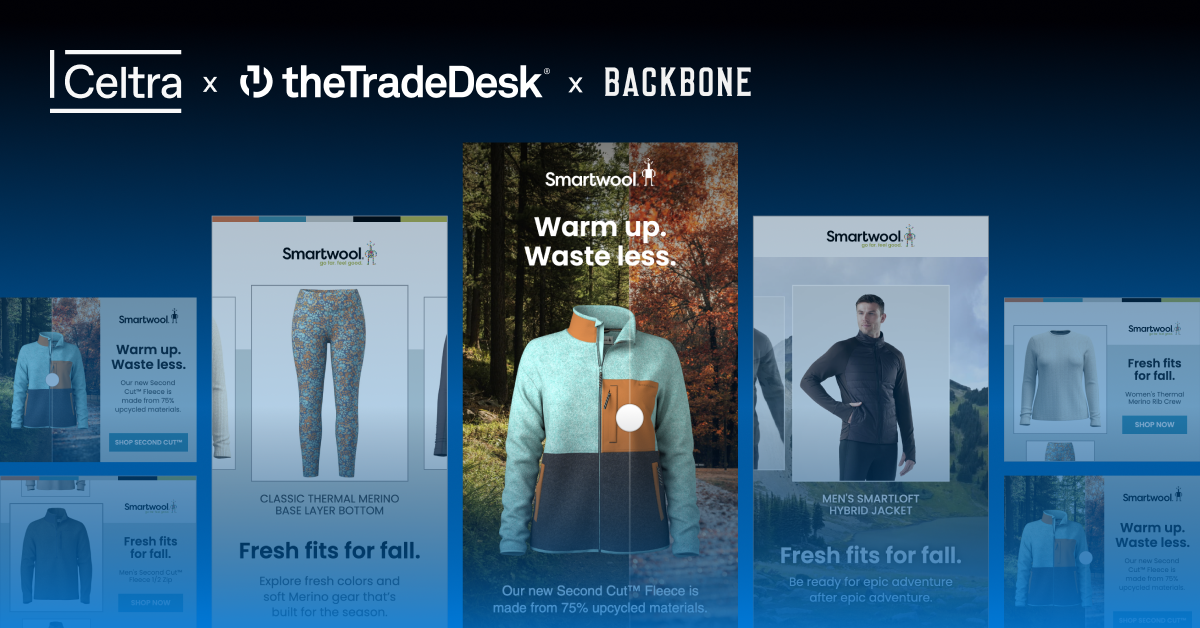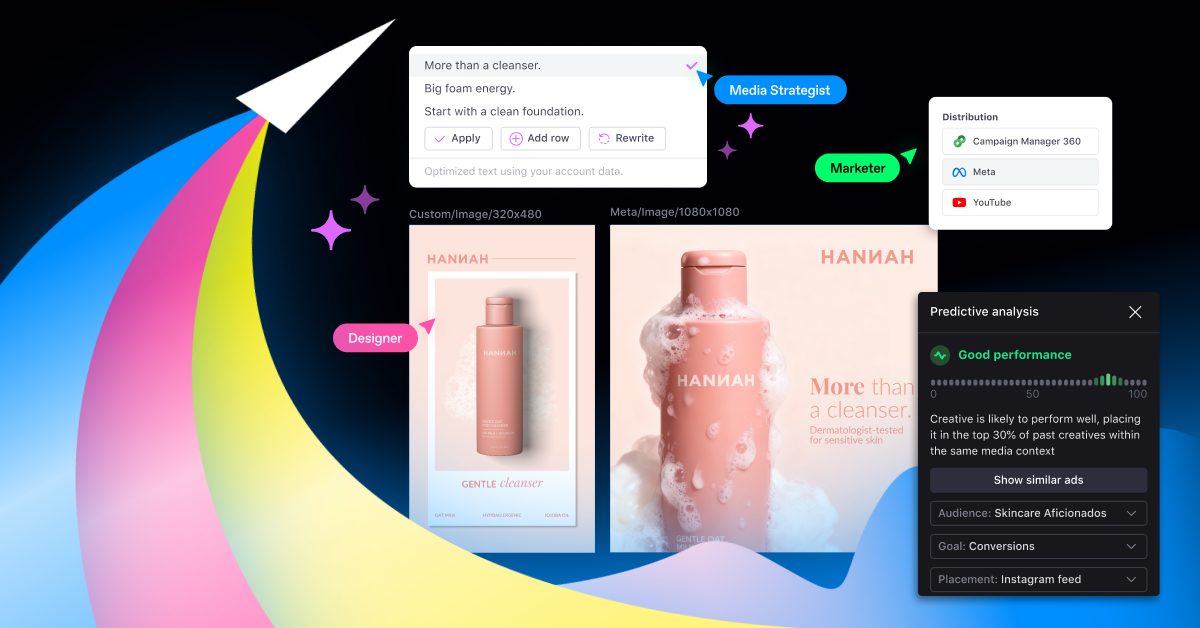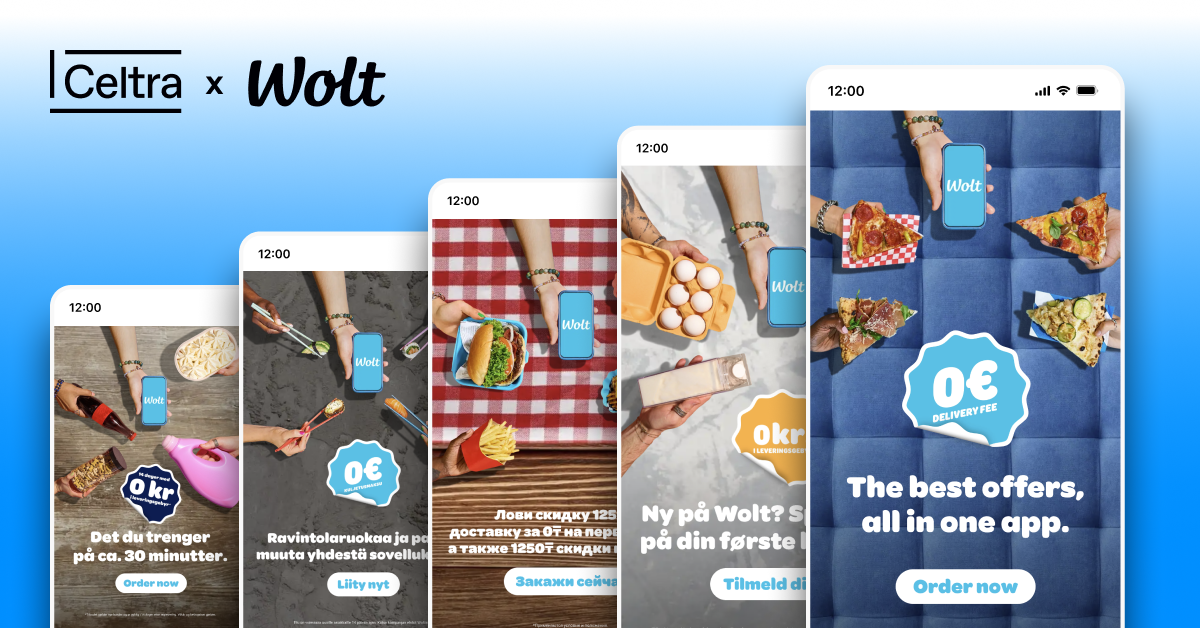You know that moment before a campaign goes live – that mix of anticipation and anxiety, like watching the roulette wheel spin and hoping it lands on your number? It’s a rush, but not exactly the smartest way to spend your budget. There’s a better way to play: creative testing replaces luck with logic and turns that spinning wheel into a strategic win.
Ad creative testing means running experiments on your advertising assets – using different copy, images, videos, CTAs, or even entirely different layouts – to see what actually clicks with your audience. Done right, it takes the guesswork (and the gut-wrenching campaign reviews) out of the equation.
Why creative testing matters
Creative is the biggest driver of ad performance, but it’s also the most overlooked. While teams fine-tune targeting, bidding, and placements, creative often gets left unoptimized.
That’s a problem. Every campaign you launch is an investment, and testing is how you make the most of it. Instead of betting your entire media budget on one creative concept, set up a creative testing framework and track what actually performs.
1. You don’t know your audience until you test
Audiences are unpredictable: what you think will resonate doesn’t always hit, and sometimes the most unexpected creative takes off. Remember the “Is it cake?” trend? No one saw that coming, but suddenly hyper-realistic cakes were dominating social media feeds. That’s the tricky part – human behavior isn’t always logical, and patterns aren’t easy to spot. But when you test, you start to see what consistently pulls people in. Strong visuals, emotional triggers, surprising twists – it’s often the same ingredients that drive clicks, engagement, and conversions.
2. Old ads don’t win new clicks
Repetitive ads wear out fast, and so does your audience. Creative fatigue is real, and once it hits, even your best campaigns start losing steam. With continuous creative concept testing, exploring different angles, visuals, and storylines – you keep your creative sharp, your brand relevant, and your audience engaged.
3. Spend smarter, not harder
Putting your entire budget behind one creative is a risky move. It might work or it might flop. And if it flops, there goes 100% of your media spend.
Now, imagine splitting that same budget between two creative variations: A and B. You’re not spending more, just spending smarter. With A/B testing, you can quickly see which version performs better and shift your spend accordingly.
Most media platforms encourage this approach from the start. Meta, Google, and others are built to optimize performance, but they can’t do much with just one creative. Their algorithms thrive on variety. The more options you feed in, the better they can learn, adapt, and deliver results. No variety? No optimization.
Proof it pays: Puma’s results speak volumes
Puma took a strategic approach to creative performance. By pairing continuous ad creative testing with Celtra’s creative automation, they quadrupled their ROAS over two years. The key? Consistently refreshing their ad creative to stay relevant, engaging, and effective.
The real reason creative testing gets stuck
If creative testing is such a no-brainer, why isn’t everyone doing it? Because the moment you try to scale it, reality hits: testing needs variety, variety creates volume, and volume creates chaos.
Suddenly, your single ad concept needs to be resized, reworked, and reimagined across formats, channels, markets, languages, audiences, and versions. What started as one creative snowballs into dozens (or hundreds), design teams get overloaded, and testing drops to the bottom of the priority list.
And even if you do manage to crank out more variants – maybe by tapping AI or a high-speed production team – there’s another roadblock waiting: delivery.
Media teams love the idea of creative variety… until they’re handed a folder with 200 ad versions. Then comes the logistical nightmare: uploading, assigning creatives to placements, checking specs, tracking versions across platforms. What should be a performance boost turns into a full-time job. And without the right systems in place, more creative doesn’t mean better results – it just means more work.
That’s why true ad creative testing requires automation on both sides: production and delivery. Celtra solves both with an end-to-end platform, connecting scalable creative supply with seamless media activation.
The blueprint for smarter creative testing
Testing doesn’t have to be complicated, but it does need a solid creative testing framework. Here’s how to do it right:
1. Perform an initial analysis
Start by identifying where your creative setup is falling short. Do you have enough variation to speak to different audiences? Are your teams drowning in sizes, formats, and channels? Zoom out and look at your full production and delivery workflow to spot bottlenecks.
2. Set clear goals
Before you start testing, define what you’re trying to learn. Are lifestyle shots more powerful than product close-ups? Should you localize messaging across different markets? Would a new CTA drive stronger engagement? Turn those hunches into hypotheses.
3. Choose your method of testing
Not all tests are created equal – your method should match your goal.
- A/B testing is simple and effective: test two creative versions with one variable difference (like a headline or image), shown to the same audience. Ideal for quick insights into what change drives better performance.
- Split testing compares entirely different creatives across different audiences, markets, or placements. It’s great for creative concept testing across different contexts: think localized vs. global messaging, or static vs. animated formats.
- Multivariate testing dives deeper by testing multiple variables at once. Mix and match different headlines, visuals, CTAs, and layouts to find the highest-performing combo. It’s more complex, but the insights are gold – if you’ve got the scale to support it.
4. Design creative variants
Now it’s time to bring your hypothesis to life. Start by choosing which elements to test based on your goal. For simpler tests, change one variable at a time, for more advanced experiments, combine multiple changes to uncover high-performing combinations. Just keep it structured – every variant should serve a purpose.
5. Run the test
Launch your variants across your chosen platforms. On Meta, creative variety powers auto-optimization, so the best-performing ads rise to the top without manual intervention. On the open web, design A/B or multivariate tests and compare performance across scenarios.
6. Analyze and adapt
Testing is only useful if you act on what you learn. Double down on the variants that perform, cut the ones that don’t, and feed those insights back into your creative process. Great testing isn’t a one-time task – it’s a feedback loop. Learn, tweak, repeat.
Where testing starts: the elements that matter
Think of your ad like a recipe – every ingredient plays a role. Swap one, and the whole flavor can change for better or worse. Creative testing helps you figure out which combination of elements delivers the strongest performance. Learn more about all the key creative elements.
Here’s what you can (and should) be testing:
1. Visuals
- Images, illustrations, product shots
- Static vs. motion
- Color schemes or design styles
- Video intros, hooks, or endings
2. Copy
- Headlines, subheads, and body text
- Tone of voice (playful vs. direct)
- Different value props or benefit-focused messaging
3. Calls to action (CTAs)
- Button text (“Buy now” vs. “Learn more”)
- Button placement, size and color
- Static vs. animated or interactive CTAs
4. Layouts and formats
- Carousel vs. single image
- Short-form vs. long-form video
- Text overlay vs. clean visuals
Speed up testing with Celtra’s Creative Automation
Creative testing works when it’s actually doable. But most teams hit a wall trying to scale it. Manual production takes too long. Delivery gets messy. And the insights? Scattered across platforms, impossible to act on in real time.
With Creative Automation, you can scale creative testing without burning out your team – or your budget. Here’s how Celtra makes testing smarter, faster, and way less painful:
✅ Automate the asset grind: Create dozens (or hundreds) of on-brand variants in a fraction of the time. Easily swap images, headlines, languages, and layouts to create more variety.
✅ Enable self-serve testing: Empower marketers and media teams to adapt creatives from brand-approved templates. No more bottlenecks and waiting on design.
✅ Distribute at scale: Push creative variants directly into Meta for real-time optimization, or test across the open web using A/B experiments or creative rotations.
✅ Close the feedback loop: Performance data flows right back into the platform, giving creative and marketing teams a clear view of what worked, why it worked, and how to make the next round even better.
Tired of guessing what creative will perform? Let’s fix that. See how Celtra’s Creative Automation platform can help you test faster and make every ad count.
Frequently asked questions
Creative testing is the process of running structured experiments with different ad variations to see what performs best. Instead of guessing, you let performance data guide your creative decisions.
Because even the best media strategy can fall flat without the right creative. Testing helps you understand what actually resonates with your audience, so every ad can drive results.
- A/B testing: Two variants, one winner.
- Split testing: Compare different creatives across audiences, markets, or channels.
- Multivariate testing: Mix and match multiple elements to find the best-performing combo.
Early and often. You can test before launch, during the campaign, or when performance starts to dip. The sooner you start testing, the more value you’ll get from it.






